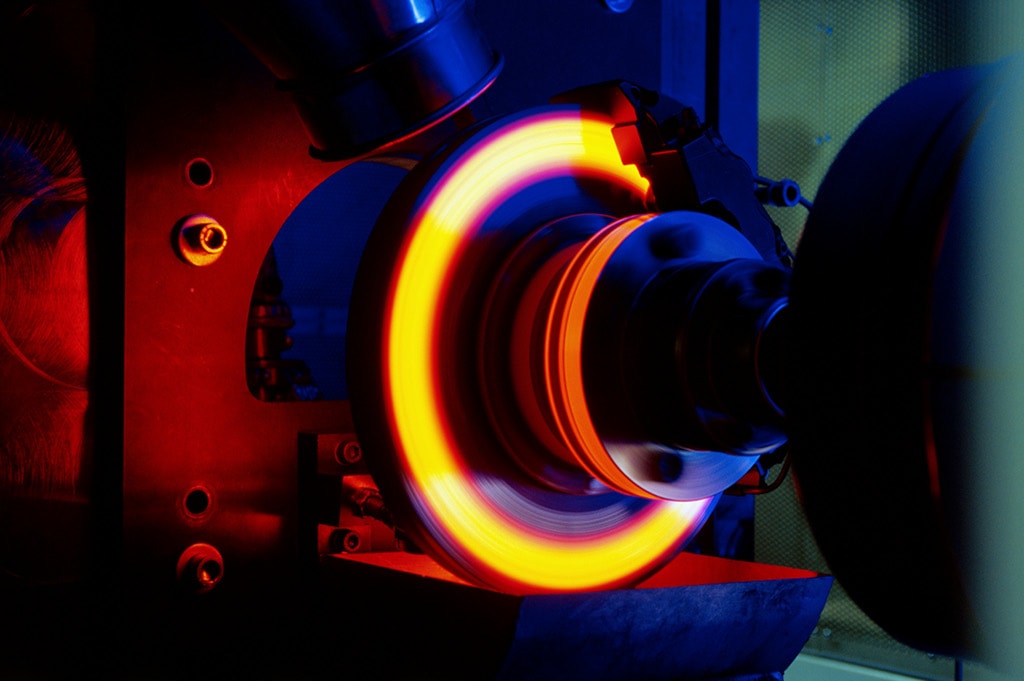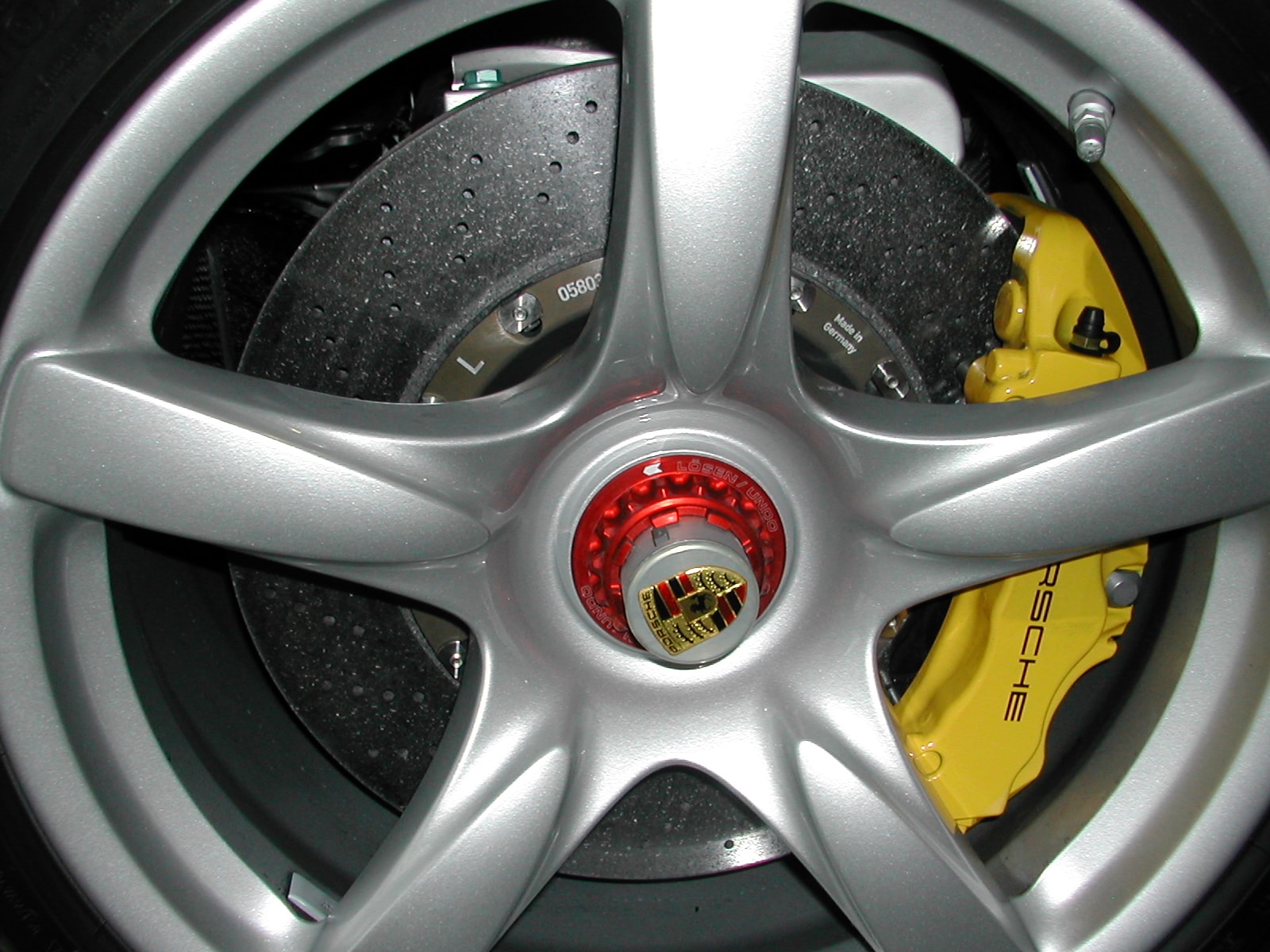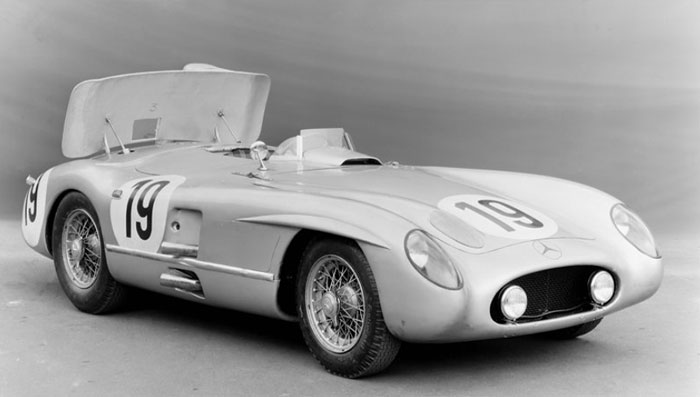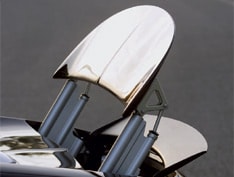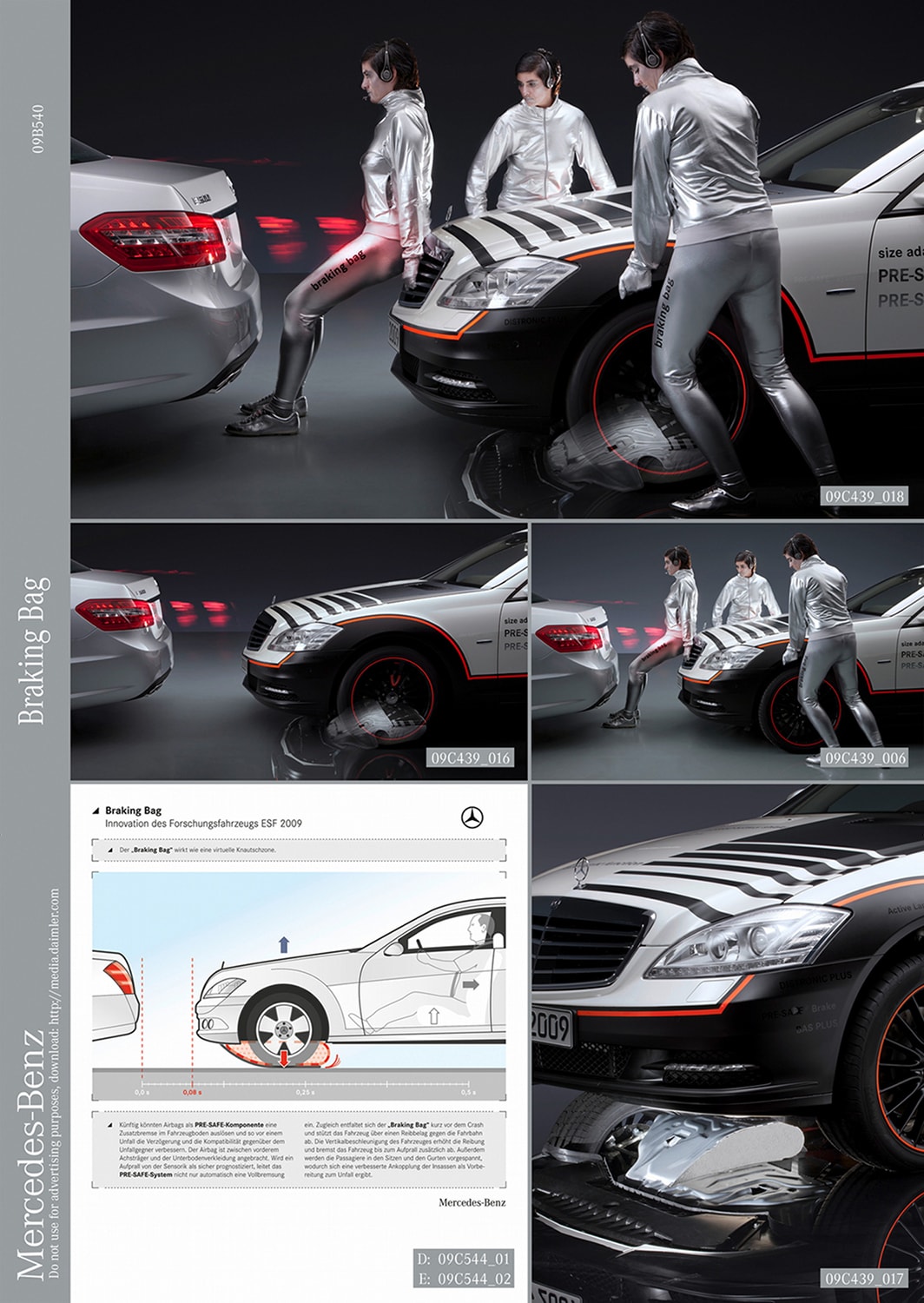Introduction- If you put one pedal through the metal, the second will have to follow
As hot hatches achieve new levels of performance and enter proper sport cars territory, the latter become more and more powerful themselves and threaten supercars. Some of these are so determined to maintain their supremacy that they mutate into hypercars. The German power wars create saloon monsters which feature previously unimaginable power figures. Tuners have also evolved and nowadays increasing performance engines’ stock outputs by 50% is as common as washing your car. Vehicles’ weight has also become greater due to the ever increasing demand for passive safety.
Our need for speed and power is being satisfied thus shaping the automotive world. But too much speed can kill (well, actually speed never hurt anyone, it’s when you suddenly fall short of it that you are affected - I know, saying it like this makes speed seem like a magic but cursed charm which fulfills your wishes but kills you if you lose it). So, in order to prevent this, braking systems had to keep up with the development under the hoods. And they’ve always had such a difficult job. You see, unlike human beings, brakes know the(ir) meaning of life: dissipating kinetic energy. And, I’ll have to put my nerdy glasses on for this one, kinetic energy grows proportionally to the square of speed. This meant that regular gray iron brakes, albeit grooved, drilled and vented had to be replaced with more advanced technologies and even doubled by other speed disposal methods. And what does the automotive industry do when it needs to improve its standards? It turns motorsport applications into civil ones and pays a little visit to its aeronautical big sister to steal some new moves.
This guide’s aim is to present the new braking technologies in a “hardware” manner, rather than a “software” one. In other words the focus will be on the actual brakes, rather than on the control and assistance technologies. In the last 15 years or so, two main innovations have dramatically changed performance automotive braking systems used on high-end series production cars.
The material that made it all possible, carbon fibre reinforced carbon (carbon-carbon), formed by a graphite matrix reinforced with carbon fiber, was originally developed for intercontinental ballistic missiles, during world war II (Hypercar owners will have yet another argument to blow up pub/bar debates from now on). Decades later, in 1976, the material was introduced in Formula One braking systems by the Brabham team. Up to the present time, thanks to its heat dissipating properties and great performance to weight ratio, the carbon brake disc/caliper combination is the solution of choice for F1 cars and actually for most elite motorsports on the globe. Imagine that in an average race, an F1 car must decelerate from speeds exceeding 200 km/h (sometimes even 300 km/h) to about 70 km/h and it only has a few seconds to do so. This process can bring the brake rotor and pads up to 1000 °C and it is repeated about 800 times per race. So, the carbon-carbon brakes are the perfect solution. Eeer, no.
Carbon brakes are monstrously expensive, even by F1 standards. That’s because both the discs and the pads are manufactured from long chain carbon and the various stages of manufacture can result in a production time in excess of 4 months just for a single brake disc. Cost issues aside, the carbon brakes have an even bigger drawback: they deliver a highly nonlinear pedal feedback as they require a certain amount of time (quite small but still existent) before reaching their optimal temperature. F1 drivers can cope with that (after all, it’s one of the things they’re paid to do) but in a real-life traffic situation it would be dangerous: I can only imagine (street) racer boys coming out through their strangely-opening supercar doors after generating a massive pile-up and blaming nothing but the carbon brakes for the whole calamity. Despite all this, some manufacturers have tried to implement this layout on road sports car (Venturi sports car manufacturer for example) but, obviously, success failed to follow.
Instead, a derivative material, carbon fiber-reinforced silicon carbide (C/SiC), a.k.a. carbon-ceramic, was used by British railway engineers in the late 80's to develop carbon-ceramic brakes for the French TGV (high speed train). The new composite material showed a huge durability advantage over the pure carbon-carbon. The more cost-defiant aeronautical industry had already been flirting with this solution, as carbon-ceramic brakes became a usual feature on large commercial airplanes in the 80's.
Cylinderella, the automotive sector, gave birth to the first roadgoing automobile equipped with carbon-ceramic brakes after a longer than a decade, true fairy-tale, pregnancy, in the form of the 2000 (production year) Mercedes CL 55 AMG F1 limited edition. I have to mention that the C-Brake, the birth name chosen by Godfather Mercedes for the new technology, had been showcased a year earlier, when it was presented in a pregnancy scan - the revealing of the 1999 Mercedes Benz Vision SLR concept.
The wonder-child allowed road driving mortals to benefit from the new composite material's properties. First of all there is the carbon-ceramic disc/pads maximum allowed temperature of up to 1400 °C, offering a fade-free holy aura. The low thermal expansion of the material reduces juddering when the brakes are hot. Regular cast iron brake discs/pads also lose the battle in cold temperatures, as carbon-ceramic ones squeal and judder less at low temperatures. Then there's the weight advantage- the carbon brake discs are up to 60% lighter than the conventional cast iron ones, which reduces the overall and, maybe more importantly, unsprung weight of the vehicle. Carbon-ceramic friction doesn’t create dust in the way that the steel one does, so fortunate owners won’t have to polish their rims so often. Last and maybe least (you’ll see why one or two hundred words below), ceramic discs have a promised life span of up to 300,000 km, three or four time greater than cast iron ones.
The idea caught on and toff manufacturers worldwide started the carbon-ceramic line dance. This type of brakes came as a standard feature for the epic 2004 Porsche Carerra GT, the benchmark setting 2005 Bugatti Veyron and others. In the last few years, carbon-ceramic brakes have become a traditional option for high end sports and even luxury vehicles. Furthermore, Ferrari decided in 2008 to fit them as standard on all its models. And it was this decision which started a real debate among customers and showed the real (current) face of carbon-ceramic brakes to dreaming enthusiasts. It’s pretty simple: like any pioneering technology, carbon-ceramic brakes have a pretty good set of drawbacks, some of which will eventually be overcome. Second of all, they don’t necessarily shorten the braking distance, they only offer high fade immunity. Third of all, the carbon-ceramic discs are more fragile than their steel homologs, being much more vulnerable to little rocks on the road, for example. First and worst of all, by far, are the current generations’ operating costs: in Ferrari’s case when they were optional, they cost $18,000. The same option installed on a Porsche would set one back $8000. The maintenance costs are a totally different story, actually the real poisoned apple. For example, the price for a new brake set (4 discs and pads) may be double the option’s initial purchase one in both manufacturers’ case. But enough with the nerdie glasses, I have a warning for owners of exquisite vehicles equipped with carbon-ceramic brakes: the next time you break a plate, fear the ceramic brake big brother revenge!
The magic healing kiss will probably come in time, as the technology spreads and its production methods become more cost-efficient. Some companies have already announced that they are making efforts to develop lower priced carbon-ceramic brakes, suitable for a greater range of vehicles. For now, it seems that such a pricey feature would only be justified for those drivers who push their cars beyond the limit as often as the rest of us get stuck in traffic.
Apparently, the news reached automotive ears. Alfred Neubauer, Mercedes’ director of motorsport at the time, came up in 1955 with the idea of equipping the 300 SLR race car with an aerodynamic brake. A hood placed behind the passenger(s) was lifted mechanically while braking, folding back after the brake pedal was released. The solution was implemented at that year’s Le Mans Race. Let’s not mention the horrible accident in which one of the SLRs in the race took a leap into the crowd killing 84 spectators and the driver. In terms of human life loss, it's the worst in motorsport history. It is also the reason why Mercedes, after winning that year’s championship, banned itself from motorsport until the 80s. However, and fortunately for the technology, the aerodynamic brake did not play any role in this real death experience.
It wasn’t until 1993 that the air above public roads was used to stop a car (well, unless some lunatic stopped his car by widely opening its door(s), which I seriously doubt). Back then, the prodigious Isdera Commendatore 112i started to perform on the supercar stage of the era. Among other out-of-this-world features, it had been gifted with an aerodynamic brake, in the form of an alter ego of its automatic speed adjustable rear spoiler. In 2003 the ghost of the 1950s Mercedes SLR Race car was back to haunt the automotive world, in a good way - as the Mercedes-Benz SLR Mclaren Hypercar for the road (based on the Vision SLR concept mentioned in the carbon ceramic brake section). Can you guess which was one of the toys that it brought back? Yeap, the aerodynamic brake. Like the Isdera, it had an automatically adaptive rear spoiler. The element takes a 10 degree position, from 95 km/h on, can rise to a 30 degree one, if the driver demands it, and climbs to 65 degrees to create decelerating drag under heavy braking.
The only other road car featuring such a goodie, up to the present day, is the Bugatti Veyron, launched in 2005. Elementary, my dear Piëch. Bugatti never had a reason to change a good, previously proven layout, so it kept the rear spoiled’s dual personality. In the first 0.4 seconds of any above 200 km/h Veyron braking process, the aero brake is automatically activated: the spoiler raises itself and makes a 55 degree angle with an imaginary horizontal line, reinforcing the car’s carbon ceramic braking system 1.3 g deceleration with an additional 0.6 g.
My geeky personality will take over for a paragraph or two and kindly ask you to bear in mind that the aerodynamic brake not only slows a car down by generating drag, but it also increases the downforce on the rear axle, offering more braking grip to the rear wheels and stabilizes the vehicle during the braking process.
However, its pure functional principle limits its road driving applicability. In other words it is only useful at very high speeds, the kind that even hypercar owners can find a bit difficult to maintain. Nevertheless, the aerodynamic brake remains much more exclusive than the carbon-ceramic one.
As we can see, both of the above-named braking technologies can stand as true automotive technology breakthroughs and may become track-day gods, but neither of them serves a real purpose in everyday road (legal) driving. However, a new vehicle deceleration technology aimed at this kind of driving has been showcased, one that puts brakes at the border between active and passive safety: the brake bag. There is no typo here: we are talking about an external air-bag used to brake a car, developed by... Mercedes Benz - this article is no corporate viral nonsense, it just seems that Merc is the most preoccupied car manufacturer when it comes to pioneering braking technologies - others carmakers posses the same overall research and development capabilities but they have different objectives.
Mercedes are still experimenting with this, as the solution has been presented as a part of the 2009 Mercedes S class Experimental Safety Vehicle, and its use on a C class test vehicle has been mentioned. However, the company has only showcased the technology’s effects when a vehicle is traveling in a straight line but has failed to provide details about how it affects a car’s ability to change direction. And that, in my view can be crucial in certain accident scenarios. The idea of an additional braking contact surface is actually older than the automobile, as the company itself says that the concept’s creation was inspired by wheel chocks used by coachmen to slow down their carriages.
The light railway industry has been using it on a large scale for a long time. The famous San Francisco cable cars have mechanical track brakes which work on this principle and most modern tramways’ emergency brakes use it too. So, future Mercedes chauffeurs may have more in common with their historical predecessors than they thought. I can’t help thinking that they would look even cooler if whips made a comeback too.
Our need for speed and power is being satisfied thus shaping the automotive world. But too much speed can kill (well, actually speed never hurt anyone, it’s when you suddenly fall short of it that you are affected - I know, saying it like this makes speed seem like a magic but cursed charm which fulfills your wishes but kills you if you lose it). So, in order to prevent this, braking systems had to keep up with the development under the hoods. And they’ve always had such a difficult job. You see, unlike human beings, brakes know the(ir) meaning of life: dissipating kinetic energy. And, I’ll have to put my nerdy glasses on for this one, kinetic energy grows proportionally to the square of speed. This meant that regular gray iron brakes, albeit grooved, drilled and vented had to be replaced with more advanced technologies and even doubled by other speed disposal methods. And what does the automotive industry do when it needs to improve its standards? It turns motorsport applications into civil ones and pays a little visit to its aeronautical big sister to steal some new moves.
This guide’s aim is to present the new braking technologies in a “hardware” manner, rather than a “software” one. In other words the focus will be on the actual brakes, rather than on the control and assistance technologies. In the last 15 years or so, two main innovations have dramatically changed performance automotive braking systems used on high-end series production cars.
Carbon Ceramic Brakes- Why they brought ceramic to a carbon fight
I have to start with the Carbon-Ceramic brakes. These devices have travelled such a long way before reaching the axles of your every-day hypercar.The material that made it all possible, carbon fibre reinforced carbon (carbon-carbon), formed by a graphite matrix reinforced with carbon fiber, was originally developed for intercontinental ballistic missiles, during world war II (Hypercar owners will have yet another argument to blow up pub/bar debates from now on). Decades later, in 1976, the material was introduced in Formula One braking systems by the Brabham team. Up to the present time, thanks to its heat dissipating properties and great performance to weight ratio, the carbon brake disc/caliper combination is the solution of choice for F1 cars and actually for most elite motorsports on the globe. Imagine that in an average race, an F1 car must decelerate from speeds exceeding 200 km/h (sometimes even 300 km/h) to about 70 km/h and it only has a few seconds to do so. This process can bring the brake rotor and pads up to 1000 °C and it is repeated about 800 times per race. So, the carbon-carbon brakes are the perfect solution. Eeer, no.
Carbon brakes are monstrously expensive, even by F1 standards. That’s because both the discs and the pads are manufactured from long chain carbon and the various stages of manufacture can result in a production time in excess of 4 months just for a single brake disc. Cost issues aside, the carbon brakes have an even bigger drawback: they deliver a highly nonlinear pedal feedback as they require a certain amount of time (quite small but still existent) before reaching their optimal temperature. F1 drivers can cope with that (after all, it’s one of the things they’re paid to do) but in a real-life traffic situation it would be dangerous: I can only imagine (street) racer boys coming out through their strangely-opening supercar doors after generating a massive pile-up and blaming nothing but the carbon brakes for the whole calamity. Despite all this, some manufacturers have tried to implement this layout on road sports car (Venturi sports car manufacturer for example) but, obviously, success failed to follow.
Instead, a derivative material, carbon fiber-reinforced silicon carbide (C/SiC), a.k.a. carbon-ceramic, was used by British railway engineers in the late 80's to develop carbon-ceramic brakes for the French TGV (high speed train). The new composite material showed a huge durability advantage over the pure carbon-carbon. The more cost-defiant aeronautical industry had already been flirting with this solution, as carbon-ceramic brakes became a usual feature on large commercial airplanes in the 80's.
Cylinderella, the automotive sector, gave birth to the first roadgoing automobile equipped with carbon-ceramic brakes after a longer than a decade, true fairy-tale, pregnancy, in the form of the 2000 (production year) Mercedes CL 55 AMG F1 limited edition. I have to mention that the C-Brake, the birth name chosen by Godfather Mercedes for the new technology, had been showcased a year earlier, when it was presented in a pregnancy scan - the revealing of the 1999 Mercedes Benz Vision SLR concept.
The wonder-child allowed road driving mortals to benefit from the new composite material's properties. First of all there is the carbon-ceramic disc/pads maximum allowed temperature of up to 1400 °C, offering a fade-free holy aura. The low thermal expansion of the material reduces juddering when the brakes are hot. Regular cast iron brake discs/pads also lose the battle in cold temperatures, as carbon-ceramic ones squeal and judder less at low temperatures. Then there's the weight advantage- the carbon brake discs are up to 60% lighter than the conventional cast iron ones, which reduces the overall and, maybe more importantly, unsprung weight of the vehicle. Carbon-ceramic friction doesn’t create dust in the way that the steel one does, so fortunate owners won’t have to polish their rims so often. Last and maybe least (you’ll see why one or two hundred words below), ceramic discs have a promised life span of up to 300,000 km, three or four time greater than cast iron ones.
The idea caught on and toff manufacturers worldwide started the carbon-ceramic line dance. This type of brakes came as a standard feature for the epic 2004 Porsche Carerra GT, the benchmark setting 2005 Bugatti Veyron and others. In the last few years, carbon-ceramic brakes have become a traditional option for high end sports and even luxury vehicles. Furthermore, Ferrari decided in 2008 to fit them as standard on all its models. And it was this decision which started a real debate among customers and showed the real (current) face of carbon-ceramic brakes to dreaming enthusiasts. It’s pretty simple: like any pioneering technology, carbon-ceramic brakes have a pretty good set of drawbacks, some of which will eventually be overcome. Second of all, they don’t necessarily shorten the braking distance, they only offer high fade immunity. Third of all, the carbon-ceramic discs are more fragile than their steel homologs, being much more vulnerable to little rocks on the road, for example. First and worst of all, by far, are the current generations’ operating costs: in Ferrari’s case when they were optional, they cost $18,000. The same option installed on a Porsche would set one back $8000. The maintenance costs are a totally different story, actually the real poisoned apple. For example, the price for a new brake set (4 discs and pads) may be double the option’s initial purchase one in both manufacturers’ case. But enough with the nerdie glasses, I have a warning for owners of exquisite vehicles equipped with carbon-ceramic brakes: the next time you break a plate, fear the ceramic brake big brother revenge!
The magic healing kiss will probably come in time, as the technology spreads and its production methods become more cost-efficient. Some companies have already announced that they are making efforts to develop lower priced carbon-ceramic brakes, suitable for a greater range of vehicles. For now, it seems that such a pricey feature would only be justified for those drivers who push their cars beyond the limit as often as the rest of us get stuck in traffic.
The aerodynamic brake - Put your spoilers in the air and give me all your deceleration
Another automotive deceleration technology apple which fell in the industry’s head is the aerodynamic brake. The concept is (you guessed it) aeronautical-sourced and, like the carbon brakes, originates in a cool military application. At the top of its family tree, we find the interwar dive bomber dive brakes. The dive bomber is a type of bomber aircraft developed during World War I which hits its targets by diving directly at them. This kind of design needed drag-creating dive brakes which partially slowed the aircraft down to improve its accuracy. The diving concept was dropped just after World War II, but more modern aircrafts inherited the aerodynamic brake concept.Apparently, the news reached automotive ears. Alfred Neubauer, Mercedes’ director of motorsport at the time, came up in 1955 with the idea of equipping the 300 SLR race car with an aerodynamic brake. A hood placed behind the passenger(s) was lifted mechanically while braking, folding back after the brake pedal was released. The solution was implemented at that year’s Le Mans Race. Let’s not mention the horrible accident in which one of the SLRs in the race took a leap into the crowd killing 84 spectators and the driver. In terms of human life loss, it's the worst in motorsport history. It is also the reason why Mercedes, after winning that year’s championship, banned itself from motorsport until the 80s. However, and fortunately for the technology, the aerodynamic brake did not play any role in this real death experience.
It wasn’t until 1993 that the air above public roads was used to stop a car (well, unless some lunatic stopped his car by widely opening its door(s), which I seriously doubt). Back then, the prodigious Isdera Commendatore 112i started to perform on the supercar stage of the era. Among other out-of-this-world features, it had been gifted with an aerodynamic brake, in the form of an alter ego of its automatic speed adjustable rear spoiler. In 2003 the ghost of the 1950s Mercedes SLR Race car was back to haunt the automotive world, in a good way - as the Mercedes-Benz SLR Mclaren Hypercar for the road (based on the Vision SLR concept mentioned in the carbon ceramic brake section). Can you guess which was one of the toys that it brought back? Yeap, the aerodynamic brake. Like the Isdera, it had an automatically adaptive rear spoiler. The element takes a 10 degree position, from 95 km/h on, can rise to a 30 degree one, if the driver demands it, and climbs to 65 degrees to create decelerating drag under heavy braking.
The only other road car featuring such a goodie, up to the present day, is the Bugatti Veyron, launched in 2005. Elementary, my dear Piëch. Bugatti never had a reason to change a good, previously proven layout, so it kept the rear spoiled’s dual personality. In the first 0.4 seconds of any above 200 km/h Veyron braking process, the aero brake is automatically activated: the spoiler raises itself and makes a 55 degree angle with an imaginary horizontal line, reinforcing the car’s carbon ceramic braking system 1.3 g deceleration with an additional 0.6 g.
My geeky personality will take over for a paragraph or two and kindly ask you to bear in mind that the aerodynamic brake not only slows a car down by generating drag, but it also increases the downforce on the rear axle, offering more braking grip to the rear wheels and stabilizes the vehicle during the braking process.
However, its pure functional principle limits its road driving applicability. In other words it is only useful at very high speeds, the kind that even hypercar owners can find a bit difficult to maintain. Nevertheless, the aerodynamic brake remains much more exclusive than the carbon-ceramic one.
As we can see, both of the above-named braking technologies can stand as true automotive technology breakthroughs and may become track-day gods, but neither of them serves a real purpose in everyday road (legal) driving. However, a new vehicle deceleration technology aimed at this kind of driving has been showcased, one that puts brakes at the border between active and passive safety: the brake bag. There is no typo here: we are talking about an external air-bag used to brake a car, developed by... Mercedes Benz - this article is no corporate viral nonsense, it just seems that Merc is the most preoccupied car manufacturer when it comes to pioneering braking technologies - others carmakers posses the same overall research and development capabilities but they have different objectives.
The brake bag - Mr. Airbag, hit the road!
The brake bag is a bespoke airbag, located underneath the front axle and protected by a shielding panel. It is deployed when the car’s sensor indicate an imminent impact-Mercedes uses a pre-crash system which integrates numerous sensors and a processing unit that decides when an impact is inevitable. By expanding itself, the Brake Bag creates friction with the road surface, thus decelerating the vehicle prior to the crash. Mercedes say that, when the brake bag comes into action, the car’s overall deceleration exceeds 2g. At the same time, the car is raised by up to 8 centimeters and so the dive effect created by the conventional braking system is compensated for.Mercedes are still experimenting with this, as the solution has been presented as a part of the 2009 Mercedes S class Experimental Safety Vehicle, and its use on a C class test vehicle has been mentioned. However, the company has only showcased the technology’s effects when a vehicle is traveling in a straight line but has failed to provide details about how it affects a car’s ability to change direction. And that, in my view can be crucial in certain accident scenarios. The idea of an additional braking contact surface is actually older than the automobile, as the company itself says that the concept’s creation was inspired by wheel chocks used by coachmen to slow down their carriages.
The light railway industry has been using it on a large scale for a long time. The famous San Francisco cable cars have mechanical track brakes which work on this principle and most modern tramways’ emergency brakes use it too. So, future Mercedes chauffeurs may have more in common with their historical predecessors than they thought. I can’t help thinking that they would look even cooler if whips made a comeback too.
